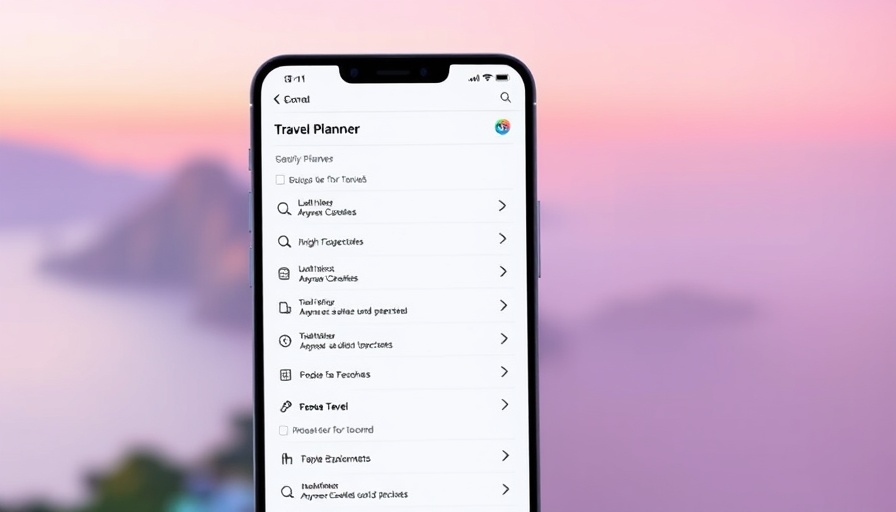
Revolutionizing Travel Planning: The Rise of AI Assistants
As businesses grow and operations expand, so does the complexity in managing tasks. For busy executives and entrepreneurs, planning leisure travel can easily become just another overwhelming task. Enter AI travel planner assistants, an innovation set to change the way we approach vacation planning in the coming years. With the ability to streamline processes, reduce time spent on logistics, and improve overall travel experience, AI tools are not just a luxury—they're quickly becoming a necessity.
A Closer Look at AI Travel Planners
AI-powered travel planners leverage sophisticated algorithms to tailor travel itineraries that fit the unique needs and desires of users. These assistants can parse through vast amounts of data—from flight availability to local attractions—optimizing the entire travel experience. For business owners generating between $2M and $10M in annual revenue, the efficiency of these assistants translates to time savings and enhanced productivity.
Unique Benefits of AI Travel Planners
Understanding the unique benefits of AI travel assistants can transform your leisure time into a structured yet joyous experience. Firstly, they significantly reduce planning time. For example, a manual review of multiple travel sites may take hours, but AI can present optimal options in minutes. Secondly, these tools often include predictive pricing functionalities, ensuring you get the best deals available.
Creating Seamless Collaboration with Travel Teams
For businesses that involve team travel, collaboration is essential. AI travel planners can enhance collaborative processes, allowing team members to contribute to itineraries and make adjustments in real-time. Whether planning a team retreat or attending a business event, these tools ensure everyone is aligned, making operational chaos a thing of the past.
Practical Implementation for Future Trips
As a business leader, the practical implementation of AI travel planners doesn’t have to be overwhelming. Start by identifying your travel needs—are you focusing on cost, convenience, or experience? Choose an AI assistant that aligns with your priorities. Examples like ClickUp’s travel assistants utilize straightforward workflows that can be integrated with existing project management software, making them ideal for businesses already navigating digital transformation.
Common Misconceptions Unveiled
One common misconception is that AI tools are too complex for practical use in everyday scenarios. On the contrary, many AI travel planners are designed with user-friendly interfaces, making them accessible to individuals without extensive technological backgrounds. The goal is simplicity, with many platforms offering walkthroughs and tutorial resources to ease the learning curve.
Final Thoughts: Why You Should Embrace AI Travel Planning
In a world where operational efficiency is paramount, leveraging AI travel planners could free up your schedule for more strategic business decisions. As these technologies evolve, they will not only refine travel planning but also give back valuable personal time—something every business owner strives for.
The integration of AI in travel planning stands to redefine how busy professionals balance work and leisure. By harnessing these digital assistants, business owners can optimize not just their travel experiences, but their overall productivity. So, as you consider your next vacation in 2025, take a step into the future by utilizing these cutting-edge tools that complement your operational efforts.
 Add Row
Add Row  Add
Add 



Write A Comment